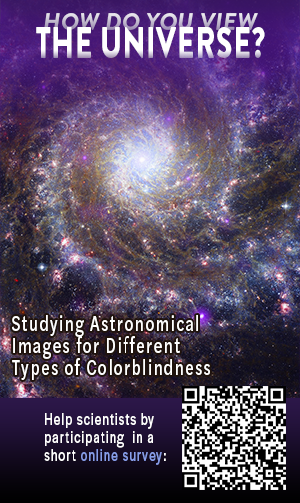General
From Space to the Stage: New Symphony Inspired by NASA's Chandra
A new symphony based on data from NASA’s Chandra X-ray Observatory, as well as the James Webb Space Telescope, transforms astronomical observations into music that traces the life cycle of stars.
While there have been many original pieces of music inspired by the heavens, this musical composition is uniquely mapped from data of space. By using data sonifications from Chandra, compiled with Webb data, of both the Crab Nebula and Pillars of Creation (M16), this new composition provides an unprecedented connection to space through music via actual data.

The Crab Nebula (left) from NASA’s Chandra and Webb telescopes is the data behind the piece “Return to Dust” and the Pillars of Creation (M16, right) from Chandra and Webb is the data behind the piece “Cathedrals of Dust & Light”
The Chandra X-ray Observatory is one of NASA’s “Great Observatories” and has been the world’s premier X-ray telescope for over a quarter century. It also leads in the innovative use of data sonification—the process of converting scientific data into sound.
This new two-part suite by composer Sophie Kastner builds on and pairs with her previous work, “Where Parallel Lines Converge,” which was based on the Chandra data sonification of the Galactic Center. In both the original composition and this latest 2-piece suite, Kastner has created musical vignettes that human musicians can play based on the NASA data and how it is represented in the sonification.
Searching for Betelgeuse’s Buddy with Chandra
We welcome Brendan O'Connor and Anna O’Grady as guest bloggers. They write about their new study as described in a press release from Carnegie Mellon University (CMU).
O’Connor is a McWilliams Fellow in the McWilliams Center for Cosmology and Astrophysics at CMU, where he studies cosmic explosions. His research focuses on time-domain and transient astrophysics with a focus on the formation and evolution of high-energy transients and their progenitors. He uses a range of optical, infrared, and X-ray observatories to investigate these phenomena across the electromagnetic spectrum and is an avid user of NASA’s Chandra X-ray Observatory. He received his PhD from The George Washington University in 2023 under the supervision of Dr. Chryssa Kouveliotou, Dr. Eleonora Troja, and Dr. Brad Cenko.
Anna O’Grady is also a McWilliams fellow at CMU. She previously completed her PhD at the University of Toronto under the supervision of Maria Drout and Bryan Gaensler and obtained her BSc. from Memorial University of Newfoundland and Labrador. She is an observational stellar astrophysicist who studies resolved stellar populations in the Milky Way and nearby galaxies, with a focus on constraining the binary evolution of massive stars.

Photo: Anna O’Grady and Brendan O'Connor, astronomers from CMU.
Our Nearest Big Red Neighbor
Betelgeuse — visible in the winter in the Northern hemisphere and the summer in the Southern hemisphere as the bright orange-red star in Orion’s right shoulder — is the closest red supergiant to Earth. It is a massive star, about 18 times the mass of our Sun, and astronomers predict that it will one day explode in a spectacular supernova explosion.
Chandra Captures Razzle-Dazzle Across Space in New Images
A new eye-catching compilation of images is being released that features data from NASA’s Chandra X-ray Observatory along with a host of other telescopes including NASA’s James Webb Space Telescope, Hubble Space Telescope and more.
The Universe Within Reach: NASA Universe of Learning Visits Perkins School for the Blind
On May 16, 2025, learners at the Perkins School for the Blind Library in Massachusetts had the chance to feel the universe—literally.
In a special day-long event hosted by Nance Wolk of the Chandra X-ray Center, and part of NASA’s Universe of Learning team, nearly 50 attendees explored the cosmos through touch and sound.
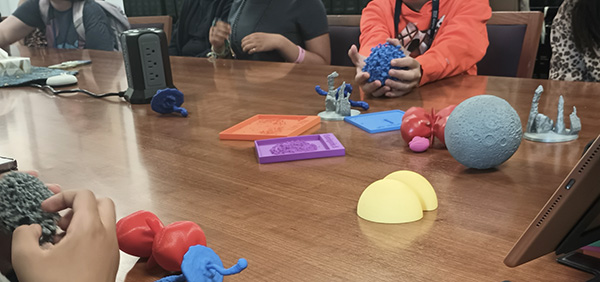
How is that possible? In recent years, NASA’s science missions have developed ways to translate data from its telescopes in space into formats that can be explored using different senses. NASA’s Chandra X-ray Observatory, which has its headquarters in Cambridge, MA, is one of missions that leads this effort. Chandra is also a member of NASA’s Universe of Learning, which aims to deliver content to learners in innovative and engaging ways.
AI Discovers Hidden Extragalactic X-ray Flash in Chandra’s Archival Data

Steven Dillmann
We welcome Steven Dillmann as a guest blogger. Steven is a PhD student in Computational Mathematics at Stanford University, and previously graduated from the University of Cambridge with an MPhil in Data Intensive Science. His research interests revolve around leveraging modern advances in artificial intelligence (AI) to accelerate and enable scientific discovery in data-intensive disciplines like astronomy. Previous experiences include internships at the European Space Agency on studying the impact of satellite constellations on Hubble astronomy and at NASA JPL on studying cloud populations on Mars with citizen science and machine learning.
Together with Rafael Martínez-Galarza (Deputy Director of AstroAI at the Center for Astrophysics | Harvard & Smithsonian and formerly of the Chandra X-ray Center), Steven developed the first representation learning approach to search for rare high-energy transients in the Chandra archive which led to the discovery of the new extragalactic fast X-ray transient XRT 200515. The result was published in a recent paper and was the subject of a press release from the Royal Astronomical Society. More details about the discovery are explained in this post.
Have you ever flipped through old photo albums and suddenly found something fascinating hidden in the background of a picture that no one had ever noticed before? Now imagine doing that on a cosmic scale.
Using a novel machine learning approach, we looked back through over 20 years of archived observations from NASA's Chandra X-ray Observatory and discovered a remarkable, powerful X-ray flash from an unknown object outside our own galaxy that had gone unnoticed for years within the vast Chandra archive — a true needle in the haystack event.
Isaacman Visit to Chandra Operations Control Center
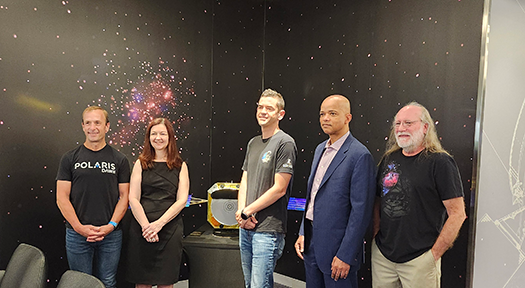
From left to right: Scott “Kidd” Poteet, Lisa Kewley, Jared Isaacman, Bob Curbeam, Pat Slane
Credit: NASA/CXC/SAO/J.McDowell
Last June, the Chandra X-ray Center had the privilege of welcoming Commander Jared Isaacman to our Operations Control Center (OCC). This facility is Chandra’s “mission control” where engineers and scientists communicate with the telescope and receive its invaluable data.
New Performance Helps Connect Science Through Music
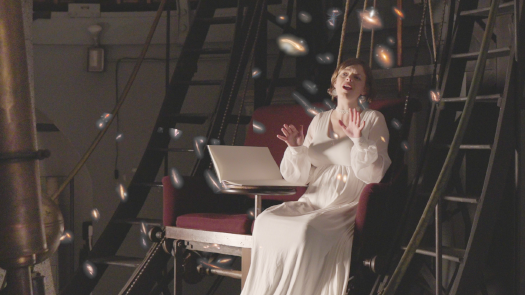
Agnes Coakley Cox, soprano, sings in "Luminosity"
Credit: David Ibbett, Center for Astrophysics | Harvard & Smithsonian (CfA)
A new composition, performed live for the first time on December 14th at the Black Hole Symphony at the Christine McAuliffe Center, is helping people discover science through music.
David Ibbett is Resident Composer at the Center for Astrophysics | Harvard & Smithsonian (CfA), Professor of Music at Worcester Polytechnic Institute, and the Director of Multiverse Concert Series. His new “Voice of the Universe” project uses music to shed light on astrophysical data and images.
The first song to be released, entitled “Luminosity,” was created from the image SMACS 0723 made from data from NASA’s Chandra X-ray Observatory and James Webb Space Telescope. Different parts of the image are sonified in different ways. Sonification is the process of translating astronomical data into sound using scientific and mathematical mapping. This allows humans to engage with data from the cosmos using one of their senses other than sight.
"Above and Beyond" Celebrates Chandra and CfA at the Hirshhorn
A symphonic event at the Smithsonian’s Hirshhorn Museum and Sculpture Garden on November 16th 2024 provided a remarkable opportunity to celebrate 25 years with the Chandra X-ray Observatory on the Mall in Washington, D.C. The free program, entitled "Above and Beyond," was built around Chandra’s milestone anniversary and featured the premiere of "Where Parallel Lines Converge." This original piece by composer Sophie Kastner, created with Chandra and alongside CXC experts, was inspired by the Chandra sonifications of the Galactic Center region. The ensemble musicians were from the 21st Century Consort and their performance was outstanding. In addition to the music, there was a selection of space imagery/video that helped showcase Chandra science. Dr. Kimberly Arcand of the Center for Astrophysics | Harvard & Smithsonian (CfA) was on hand for a special conductor’s discussion and question-and-answer session before the performance along with other invited guests, and there was a brief reception afterwards.
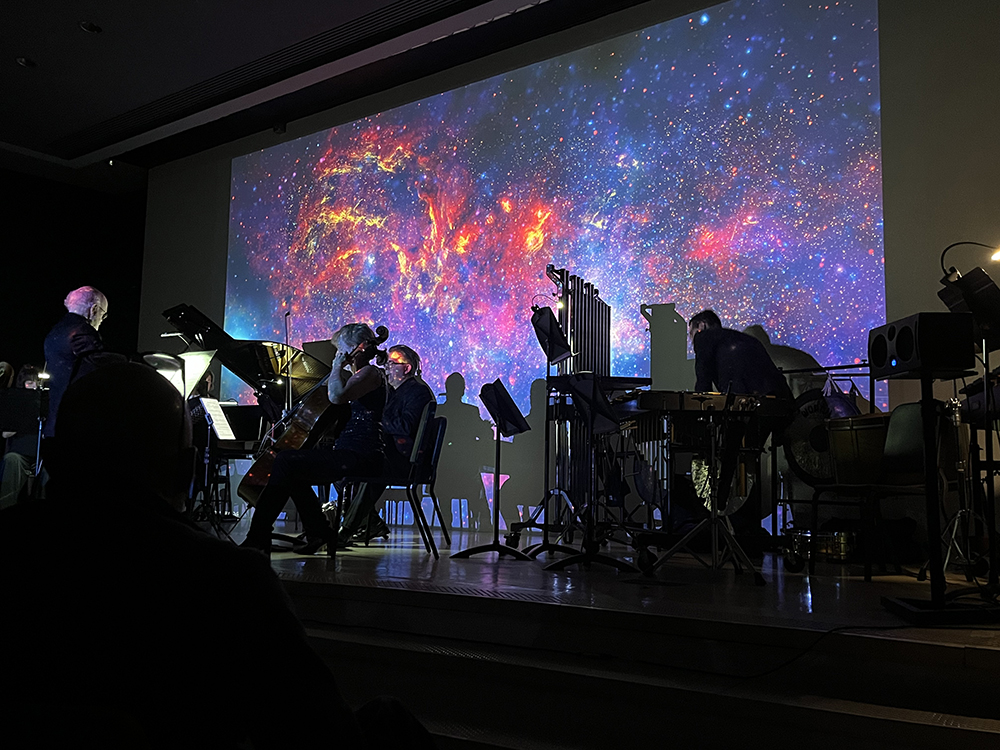
Chandra Documentary Wins Award in Film Festival
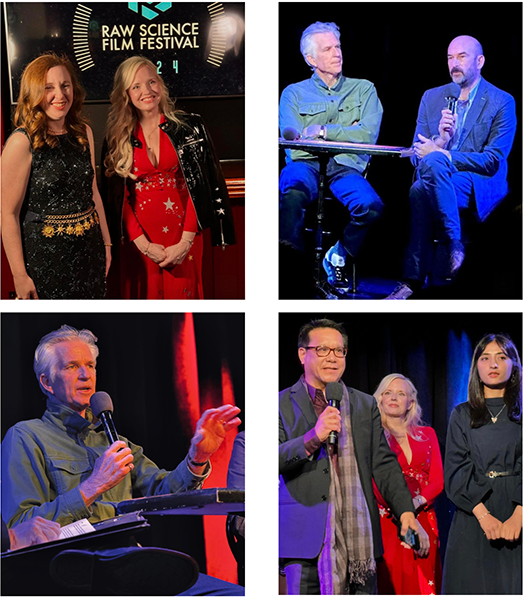
Images from the Raw Science Film Festival Awards Ceremony, featuring
Matthew Modine, Dr. Kim Arcand, Elizabeth Landau, and more.
On Saturday, October 5, the Raw Science Film Festival opened in New York City and the CfA’s Dr. Kimberly Arcand was on hand, along with Elizabeth Landau of NASA HQ, to celebrate the “Listen to the Universe” documentary that won the Industry award for “Best New Media”.
“Listen to the Universe” is a 20-minute documentary produced by the Chandra X-ray Center at the CfA and NASA+ that takes viewers behind the scenes of the team that creates data sonifications.
The Raw Science Film Festival included an awards ceremony featuring a special Q&A with actor/executive producer Matthew Modine, along with screenings and director discussions of "Listen to the Universe" and other selected films. The festival's overall mission is to humanize science and keep fact-based storytelling at the forefront of popular culture.
-Megan Watzke CXC
Participate in New Survey on Color Blindness and Astronomy

Upper-left: Cassiopeia A; Upper-right: V404 Cygni; Lower-left: Helix Nebula; Lower-right: M74
Credit: NASA/CXC, HST, JWST, SST & Swift
Chandra is committed not only to learning about the Universe, but also to learning about learning about the Universe. Our team have become experts — and partners with others outside of Chandra — on examining how people view and explore space through astronomical data.
Our latest research project involves investigating how people with color blindness experience astronomical images. Please consider taking our survey on this topic. You do not need to have color blindness to participate, but, of course, we are excited to hear from people who do!
The survey is open now. We would greatly appreciate it if you could take the time to fill it out — it’s short! Also, please feel free to share this survey with your family, friends, and colleagues: https://www.surveymonkey.com/r/coloruniverse
Thank you for your help!



